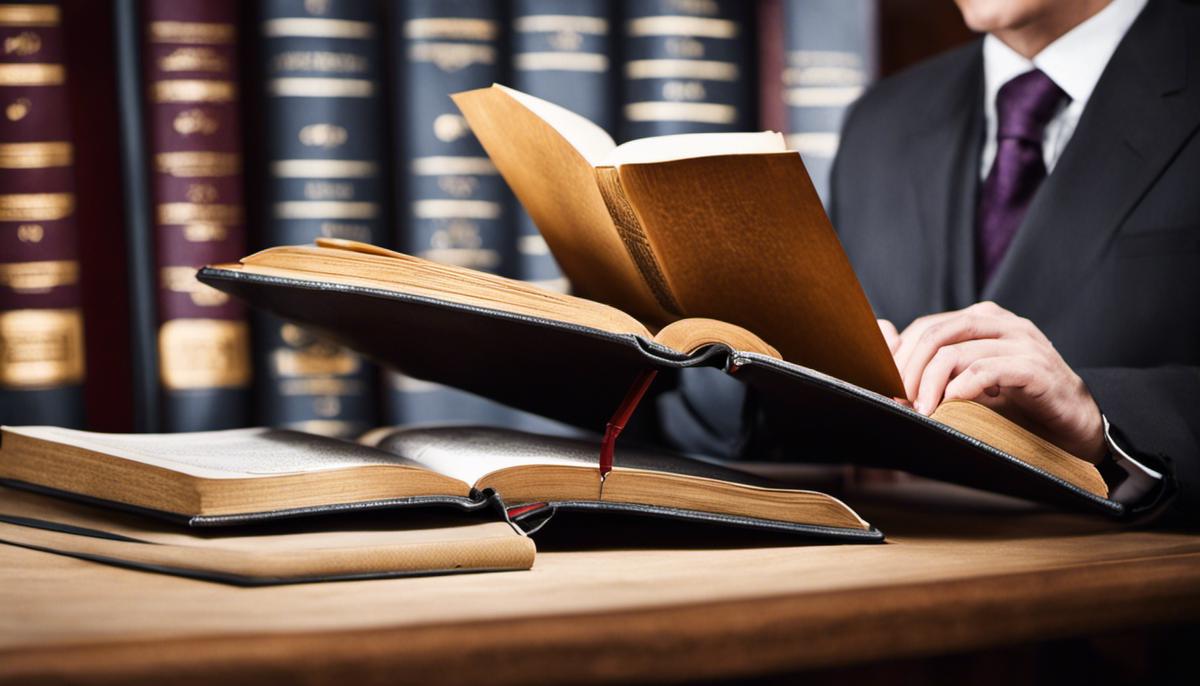
16 Nov Tips on Transcribing a Video Deposition
In today’s fast-paced legal world, ensuring the accuracy and precision of recorded information is paramount, especially when it comes to video depositions. The significance of transcribing these depositions correctly cannot be overstated as they often play a potent role in the courtroom. To achieve this, a keen understanding of legal terms, mastering the use of transcription tools, and the ability to proofread effectively are essential skills. This article will share key tips on transcribing a video deposition for anyone aiming to transcribe video depositions in the most efficient and accurate manner.
Understanding Legal Terms
An Anatomy of Video Deposition Transcription: Key Legal Jargon and Technical Terms
When it comes to tips on transcribing a video deposition, this is a niche of the legal field that warrants nuanced understanding and specialized skills. As transcriptionists, comprehending the lexicon shrouded around these proceedings enables the delivery of direct, error-free transcriptions. Strive for mastery over vocabulary, understanding the terminologies, and their usage in context, and you will find you’re filling an essential role in the discovery phase of trial preparation.
- Deposition: Present at the core of any discussions related to legal transcription, a deposition represents sworn, out-of-court oral testimonies given by a witness as part of the discovery process in litigation. Transcriptionists must convert these spoken words into an eloquent written format.
- Plaintiff and Defendant: The plaintiff refers to the individual or party who brings a case against another in court. Conversely, the defendant is the person or party against whom the lawsuit is made. A proper understanding of these terms is key to transcribing depositions effectively.
- Objection: This term signifies the opposition of a given piece of evidence or an argument made by the other party. It is crucially used by the attorneys within depositions, and for the sake of accuracy, the transcriptionist must account for all instances where an objection is made.
- Exhibit: This denotes physical or documentary evidence brought forward during a deposition. Each exhibit is represented by numbers or letters, which should be transcribed correctly to ensure the evidence is unambiguously identified in the transcript.
- Subpoena: A legal document ordering an individual’s appearance to testify in court. Transcriptionists may transcribe mentions of subpoenas when providing context to the deposition or in discussions relating to future court proceedings.
- Affidavit: A written statement confirmed by oath or affirmation, typically used as evidence in court. The term may appear in cases where written testimonies supplement or make up part of the deposition.
- On the record/Off the record: Both phrases are central to the transcription process, indicating whether testimony is officially recorded. Transcriptionists should be aware of these states to include only the ‘on the record’ content in the final documentation.
The arena of video deposition transcription demands a variety of skill sets, one of which is the command over legal jargon and technical terms. It is by no means exhaustive and one should also be familiar with the terminologies relevant to the particular field of the deposition (medical, property, etc.). But, diving headfirst into these terms can simplify and enhance your transcription proficiency, making you an invaluable asset in the legal process.
Transcription Tools
Navigating the Intricacies of American Courtroom Etiquette: A Comprehensive Examination
Fresh nuances and depth can be unveiled in our understanding of a courtroom’s operation when we delve into its etiquette. Grasping the meaning and application of various terminologies ensures smooth navigation through this legal labyrinth.
When considering ‘Hearsay’, it is often misconstrued as a simple passing on of information. In reality, it is a complex rule in evidence law that prohibits an out-of-court statement from being used to prove the truth of the matter asserted therein. This law, instrumental in ensuring a fair trial, extends further into numerous exceptions and limitations, an area continuously under judicial scrutiny.
‘Leading questions’, another term that is often thrown around with casual disregard for its complexity, refers to the practice where an attorney frames a question in such a way that it puts words in the witness’s mouth. While it’s generally impermissible in direct examination, it’s allowed in cross-examinations, corroborating the system’s core value of a just hearing.
Voir dire, a French term meaning ‘to see to speak’, represents the process where attorneys question potential jurors during jury selection. This aids them in identifying any potential bias or predisposition the individual might harbor towards the case. This process, crucial in ensuring an impartial trial, showcases the American legal system’s commitment to equity.
The term ‘Prima facie’, Latin for ‘at first look’, refers to a situation where enough evidence is presented to support a case should no contradictory evidence be provided. It reinforces the principle of ‘innocent until proven guilty’, further strengthening the rights and protection of the accused.
More Terms For Transcribing A Video Deposition
‘Burden of proof’ is an important component in a trial. It’s the obligation of a party to provide satisfactory evidence for the claims they make in a lawsuit. ‘Beyond a reasonable doubt’ in criminal trials and ‘preponderance of the evidence’ in civil trials are examples of how this concept varies based on the case type.
Lastly, we have ‘Res ipsa loquitur’, a Latin phrase meaning “the thing speaks for itself”. Used in tort law, this doctrine allows the judge to infer negligence from the very nature of an accident or injury in the absence of direct evidence. It provides a means to expedite the proceedings when the incident could not have happened without negligence.
Understanding these, and numerous other terminologies provides a deeper comprehension of the court’s complex operations in its quest to ensure justice. Just as each cog contributes to a well-functioning machine, understanding these concepts is integral to appreciating the harmonious symphony that is a courtroom procedure.
Knowledge, as they say, is power. And, in an intricate sphere such as law, this adage holds particularly true. Each term, when understood in its totality, presents a ceaseless endeavor towards a fair, just, and transparent legal process. And that, in effect, is the cornerstone of our legal system.
Effective Proofreading
Essential Techniques for Meticulous Transcription Proofreading
The art of transcription involves capturing the spoken word accurately, ensuring the preservation of knowledge for the future. Rooted in exactitude, it morphs speech into text, broadening accessibility and facilitating comprehension. Yet, transcription doesn’t necessitate flawlessness in its initial phase. Operations are amassed with proofreading that consolidates the immutability of the message, returning the transcription to its intended perfection.
Following transcription, especially of legal proceedings that surpass casual conversation in intricacy and consequence, errors are likely. Courtroom lexicon, structured protocols, and a wide range of legal concepts further exacerbate the complexity. Therefore, comprehensive proofreading is an indispensable companion to top-tier transcription.
Precision denotes proofreading. The first rule necessitates comparing the transcript against the original audio or video recording. Ears and eyes are synchronized in a mission for exactness, careful scrutiny that leaves no sound wave unanalyzed, no word unchecked.
The use of specialized software is beneficial. It enables playback control, adjusting speed for closer listening or replaying ambiguous passages, thus expanding accuracy margins. These tools, often equipped with text-to-speech features, allow for autonomous cross-verification, an extraneous layer safeguarding against human oversight.
Proficient knowledge of the terminologies and jargon unique to the field, such as the rules of the game in the legal world, forms the bedrock of meticulous proofreading. When the proofreader is acquainted with the discourse’s nuances, miscued utterances stand out and can be rectified.
Contextual sense plays a decisive role in alleviating ambiguities. A keen understanding of the subject matter and context allows for interpretation based on plausibility, greatly enhancing transcription validity. For instance, in legal transcription, understanding the dynamics between cross-examinations and redirect examinations, or knowing the difference between statutory law and case law, can significantly aid in discerning intended meanings.
The logical sequence must be maintained, as transcription is not merely the mechanical transformation of sound to text. It must reflect intelligible conversation or discourse, mirroring the sequence and cohesion inherent in the original speech.
Ensuring consistency in terminologies, names, and abbreviations throughout the text is critical. Legal documents, in particular, demand strict standardization. It leaves no room for heterogeneity, confusion, or mix-up. Lastly, a conventional grammar, spelling, and punctuation check preludes the completion of transcription proofreading. The grammar rules, the punctuation placement, and the word spellings all contribute to the transcription’s readability and understandability. This linguistic examination ensures pristinely structured, grammatically flawless text.
The Bottom Line For Tips on Transcribing a Video Deposition
In conclusion, knowing the best tips on transcribing a video deposition will aid in fulfilling the transcription’s promise of accuracy. Its significance is potent, particularly in legal transcriptions, where precision is paramount, and even seemingly minute errors can alter case outcomes. Encompassing comparison, context comprehension, consistency maintenance, and a final linguistic inspection, it safeguards the sanctity of the spoken word, etched in the indelible ink of transcription.
Having grasped the intricate landscape of video deposition transcription, it becomes clear that the task calls for more than just your conventional note-taking. It demands a profound grasp of legal terminology, the right expertise in using transcription tools, and the vigilance to carry out diligent proofreading. By honing these skills and investing time in learning about the technological aids at their disposal, anyone can ensure the delivery of high-quality, accurate transcriptions. For after all, in the complex and detail-oriented field of law, precision, reliability, and expertise are not merely beneficial, but essential.







